Bolt Pretightening Tutorial
What is tighten the torque
In principle, there are two tightening methods: “uncontrolled” and “controlled”.
Controlled tightening: the use of calibrated measurable equipment, in accordance with pre-specified methods, by trained personnel.
Uncontrolled tightening: use equipment or methods that cannot be measured.Apply pre-tightening to bolt and nut assemblies using a hammer and wrench or other type of punching tool
Advantages of controlled tightening
1. Known, controllable and accurate bolt load.The output controllable tool is used to calculate the required tool setting value.
2. Even bolt loading.This is especially important in joints with sealing gaskets, since uniform compression is required to make the gaskets effective.
3. Operate safely as scheduled.The dangerous action of manual non-controlled tightening is eliminated and the operators are required to be skilled and follow the prescribed methods.
4. Shorten operation time and improve productivity.Use controlled tools instead of manual labor to shorten tightening time and operator labor intensity.
5. Reliable and repeatable results.Use calibrated and tested equipment, follow prescribed methods, skilled operators, and consistently achieve known results.Get the right results at once.Many uncertainties of bolt failure in operation are eliminated by ensuring correct assembly and tightening of bolts.
Tighten the torque
1. What is torque?
Torque is a measure of the amount of force acting on an object to make it rotate.
2. What is torque tightening?
Apply a preload on the fastener by rotating the nut of the fastener.
3. Tighten torque and preload
The amount of preload produced when torque is applied depends largely on friction.
4. There are mainly three different “torque components”
4.1 torque of elongated bolts
4.2 torque to overcome friction in bolt and nut threads
4.3 torque to overcome the friction at the bearing plane of the nut hole
Lubrication reduces friction
Lubrication during tightening reduces friction, reduces bolt failure during installation, and extends bolt life.The change of friction coefficient can affect the amount of preload achieved under the specified torque.
The higher the friction, the less torque is converted to preload. To accurately achieve the required torque value, the friction coefficient provided by the lubricant manufacturer must be known.Lubricants should be applied to nut bearing surfaces and threads.
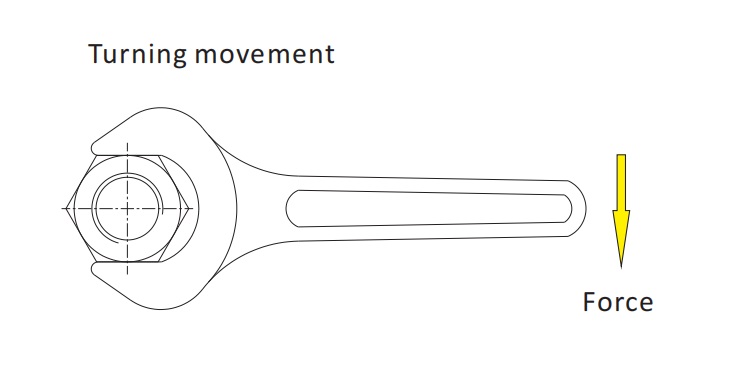

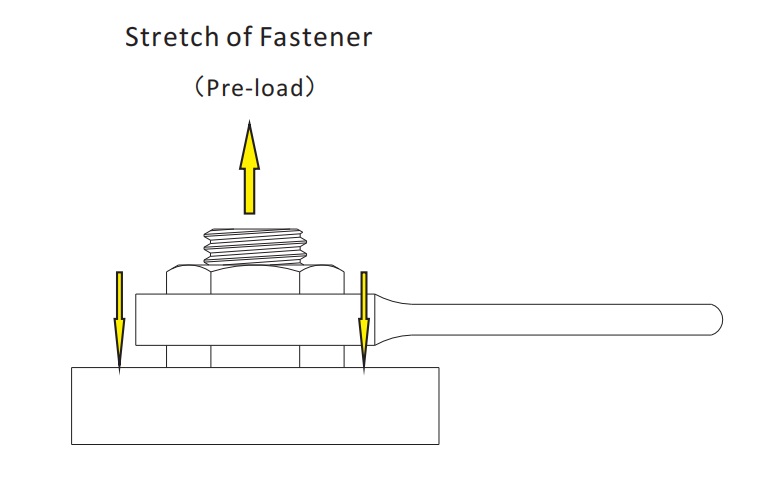

Torque tightening
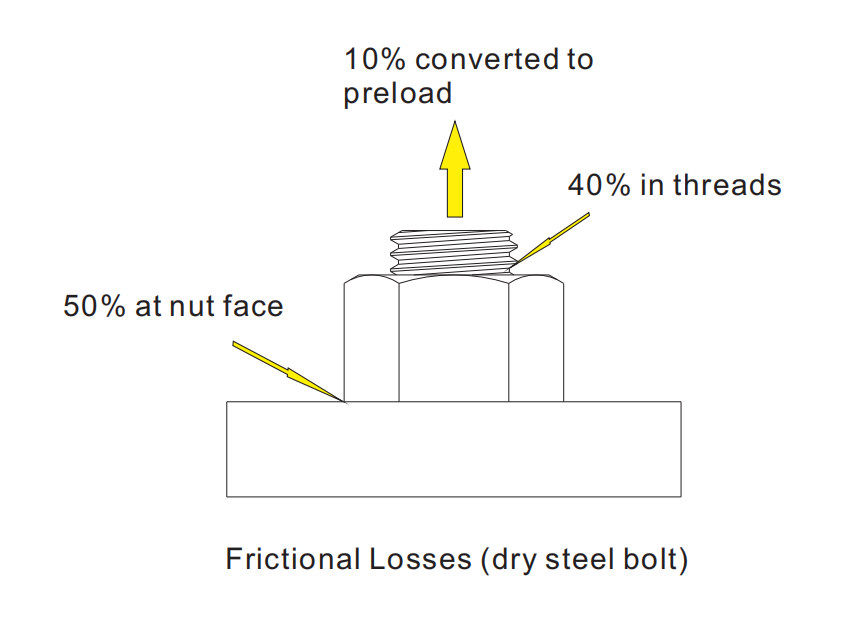

Frictional Losses
Torque fastening
When tightening, you can usually tighten only one bolt at a time, which can lead to point loading and load dispersion.In order to prevent this from happening, torque should be applied step by step in accordance with the prescribed mode.
Load order
Step 1: tighten the nut quickly with a wrench to ensure 2-3 circles of thread sticking out the nut.
Part 2: tighten each bolt to 1/3 of the final torque in the mode shown above.
Part 3: tighten each bolt to 2/3 of the final required torque in the mode shown above.
Part 4: increase to full torque in the mode shown above.
Step 5: starting with bolt no. 1, tighten each bolt clockwise for the last time with the final torque value.
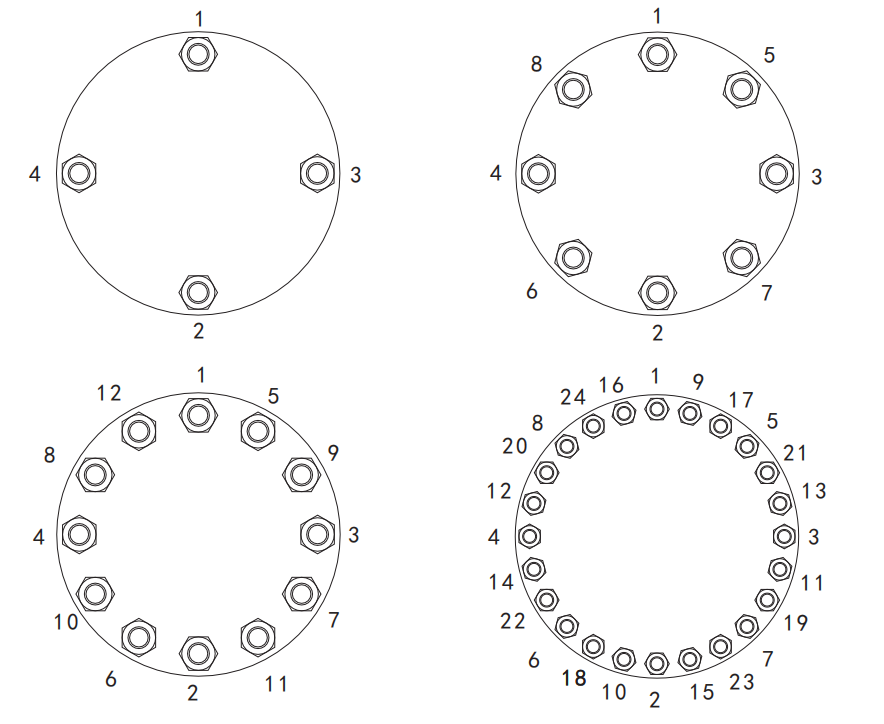

Select the correct torque wrench
1. When loosening nuts or bolts, the required torque is often greater than that of tightening
2. In general, it is required to apply a torque value of 2.5 times to remove nuts or bolts
3. When loosening nuts or bolts, the applied torque value shall not exceed 75% of the maximum torque of the tool
Note:Unscrew torque should be at least 2 times of tightening torque
Torque corner fastening
Torque corner fastening is more accurate than torque fastening only
The precise pre-tightening force is achieved naturally with the defined turning Angle
High fastening quality
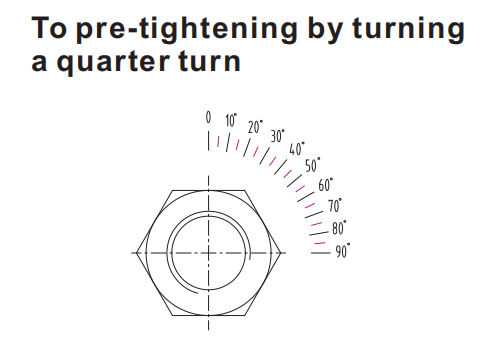

Tensile tightening
Condition for choosing tensile tightening
The stretching out length of the bolt from the nut have to be up to 1 time of the bolt diameter
Advantages of using tensile pre-tightening
Bolt is not twisted, therefore there is no torque force on the bolt
The precise torque achieved after tensile pre-tightening the nut
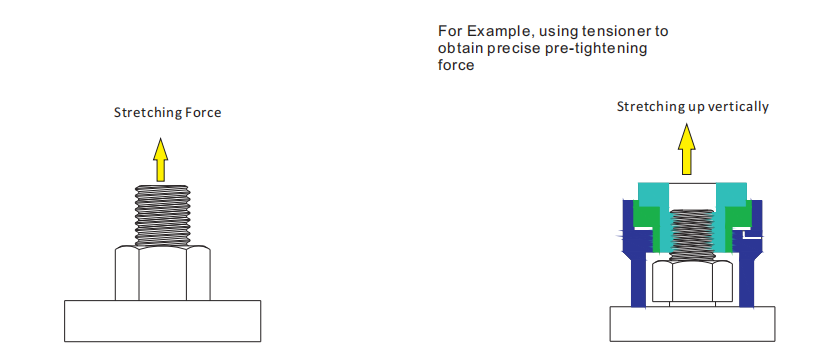

Conversion of Frequent Unit
Torque
1N.m=0.737Ft.lb
1Ft.lb=1.356N.m
1kg.m=7.233Ft.lb=9.8N.m
Length
1mm=0.039in
1in=25.4mm
1m=3.281Ft
1Ft=0.305m
Force
1kg=2.2046 lbs
1lbs=0.4536kg
1Ton=1000kg
1KN=0.102Ton
1Ton=9.81KN
Pressure
1MPa=1N/mm2
MPa=10.2kg/cm2
1MPa=10Bar
1MPa=145psi
1Bar=14.5psi
1psi=0.069Bar
Power
1Hp=0.746KW
1KW=1.34Hp
Weight
1Ton=9.8KN
1KN=0.102Ton
1N=0.102kg
1kg=9.8N
1kg=2.204 lb =9.8N